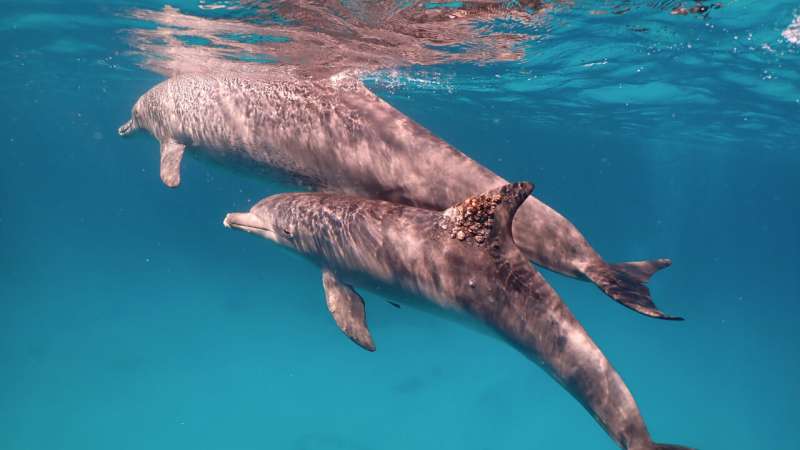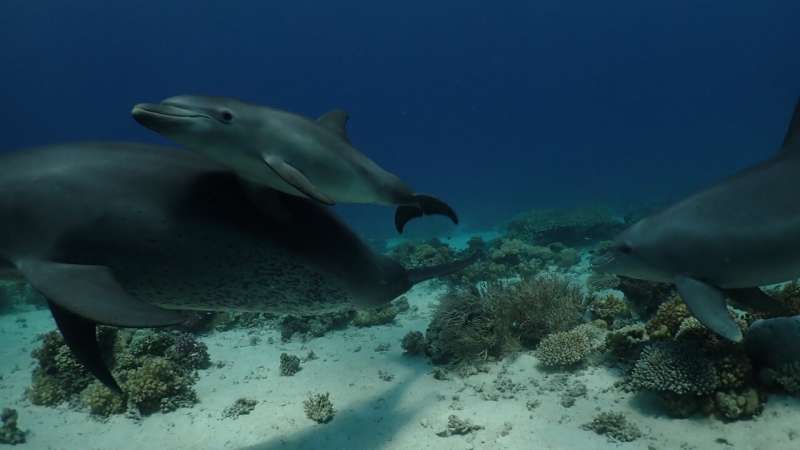
If a human comes down with a rash, they might go to the doctor and get some medicine to treat it. The skin conditions of bottlenose dolphins are similar to those of humans, but they come about their medication by rubbing themselves against corals. According to researchers in the journal iScience, the dolphins are using the corals to medicate their skin conditions.
In the Northern Red Sea, off the coast of Egypt, a wildlife biologist first observed dolphins rubbing against coral. She and her team noticed that the dolphins were picky about which corals they rubbed against, and they wanted to understand why.
She was able to study the dolphins up close because she is a diver. She was able to get the trust of the dolphins because they weren't phased by the large bubbles released by the diving tanks and habituated towards divers.
She and her colleagues were able to identify and sample the corals that the dolphins were rubbing on once the Pod allowed her to visit them regularly. By rubbing against the corals, the bottlenose dolphins were causing the tiny polyps that make up the coral community to release mucus. The team collected samples of the coral to understand what mucus contained.
Gertrud Morlock, an analytical chemist and food scientist at Justus Liebig University Giessen in Germany, and her team used high-resolution mass spectrometry to analyze samples of the gorgonian coral Rumphella aggre.
The team believes that the mucus of the corals and sponges is helping to regulate the dolphin skin's microbiome and treat infections.
The local dolphin populations are important to the reefs where these corals are found. They head there to rest and have fun. The dolphins wake up to perform coral rubbing in between naps.

The tourism industry makes a lot of money out of dolphin swimming. She says that people are dreaming of swimming with the dolphins, so they are figuring out which reefs they use and disturbing the dolphins if they don't follow the guidelines for how to approach them in a responsible way. She has started an organization called Dolphin Watch Alliance to educate tour guides, tourists, and the public on how to give tourists experiences that are safe for dolphins, and has pushed for the reefs to become protected areas.
As long as the reefs remain a safe place for the dolphins, the team can continue to study coral rubbing and identify which corals and sponges are being used for specific body parts.
More information: Gertrud Morlock, Evidence that Indo-Pacific bottlenose dolphins self-medicate with invertebrates in coral reefs, iScience (2022). DOI: 10.1016/j.isci.2022.104271. www.cell.com/iscience/fulltext … 2589-0042(22)00541-7 Journal information: iScience Citation: Watch dolphins line up to self-medicate skin ailments at coral 'clinics' (2022, May 19) retrieved 19 May 2022 from https://phys.org/news/2022-05-dolphins-line-self-medicate-skin-ailments.html This document is subject to copyright. Apart from any fair dealing for the purpose of private study or research, no part may be reproduced without the written permission. The content is provided for information purposes only.